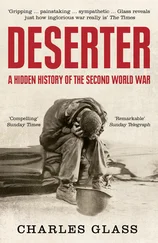The elephant to be killed was a three-ton female named “Topsy,” who was reputed to have killed three people over the last few years. The latest was a cruel trainer who’d tried to feed her a lit cigarette. Her owners, believing she was too dangerous to keep, first attempted to poison her with cyanide. A thousand people gathered to watch the event, but Topsy didn’t budge.
With New York having abandoned hanging in favor of the electric chair, Topsy’s owners saw the potential for another live event.
So did Thomas Edison.
Sensing an opportunity to strike back against Westinghouse in dramatic fashion, Edison stepped forward to volunteer his electrical expertise on one condition. They’d have to let him film the entire event.
• • •
Edison checked in with his electrical technicians. They assured him that everything was ready. Then he checked in with his camera crew. They were set as well.
Edison waved and a circus trainer led the ill-fated elephant to the electrocution apparatus that he had designed. Edison glanced back and forth between Topsy and the cameraman. The death march was all being captured on film.
Edison directed the filming to stop once Topsy was in position. He did not want to film the long process of fitting Topsy with electrodes and the specially designed copper-lined sandals that would transmit the current.
The trained elephant dutifully raised each foot so the sandals could be slipped underneath. While the animal was being prepared, Edison checked the electrical equipment again and reminded the guards to hold the onlookers away from the camera. There would be only one take.
Finally, all was in place. Edison signaled and the cameraman started filming again.
He waited until he was certain the camera was fully operational, and then he signaled again. Then 6,600 volts pulsed through the sandals and into Topsy.
Smoke billowed from Topsy’s feet and she shuttered violently. She tried to shake one of the sandals loose, but quickly convulsed, then tumbled forward onto her head and rolled over to her side. Smoke continued to billow from her until the alternating current was turned off after a full ten seconds.
Topsy never moved again.
EPILOGUE
In 1893, the same year as the World’s Fair that had showcased alternating current, George Westinghouse won the Niagara Falls hydropower contract that cemented his company’s dominance. After a long and brutal financial battle, New York and Boston bankers gained control of Westinghouse Electric in 1909 and ousted Westinghouse as its chairman. He continued to successfully run his other businesses until his death five years later.
Thomas Edison built a ten-company motion picture trust that tried to monopolize the movie industry. Edison used the trust to limit the length of films to ten to twenty minutes because he believed that was the attention span of audiences. The trust also refused to identify actors by name to prevent them from demanding higher salaries. To escape the Edison Trust, independent producers fled New York for a town in California that was protected by the Ninth Circuit Court of Appeals’ distaste for patent infringement claims. The town was called Hollywood.
Alternating current won the war, but direct current has not disappeared completely. Batteries, solar power systems, and electronics with circuit boards still rely on it. However, one of the devices at the center of the Edison-Westinghouse War of Currents does not: the electric chair.
On January 16, 2013, Virginia death row inmate Robert Gleason chose to die from electrocution rather than lethal injection. He was executed with the same system of electricity now used safely in millions of homes around the world: alternating current.
6
The Battle of Wounded Knee: Medals of Dishonor
Grand River, South Dakota
December 12, 1890
“Rescue me from these traitors!” Sitting Bull shouted.
Lieutenant Bull Head was getting more concerned by the minute. What had started as a relatively simple mission to arrest this Indian chief for his involvement in a Sioux uprising was quickly getting out of hand.
The lieutenant, in response to orders from General Nelson A. Miles, had entered the camp at first light with forty-two other Indian police. They’d hoped to arrest the old chief quickly and quietly, before his hundreds of followers could react.
But that’s not at all what happened.
The lieutenant had entered Sitting Bull’s cabin and found the chief and his sons asleep. Sitting Bull had been nude and it took a few minutes for him to dress. He had been willing to come quietly at first, but Crow Foot, one of his sons, started to berate his father for not resisting. When the small party stepped outside, the lieutenant saw that armed Sioux had gathered in front of the cabin. Sitting Bull, incited by his son, began to order his people to kill Lieutenant Bull Head. “This man is the leader!” he shouted. “Kill him and the others will flee!”
The lieutenant saw that his fellow policemen were holding back the angry Sioux in a wide arc, but they were surrounded and had no way to get to their horses. Damn the Ghost Dancers , he thought. The Sioux danced for days on end in a ritual meant to reunite the living and the dead and eliminate evil, including the white man, from the world. Hundreds of these crazed believers had made camp around Sitting Bull’s cabin, and it now seemed that they were all coming to their leader’s defense.
Bull Head hated these ignorant Ghost Dancers and what they were doing to the public’s perception of Indians. What they practiced, he believed, wasn’t a religion; it was wishful thinking. The buffalo weren’t coming back, and the white men weren’t going anywhere. The Sioux way of life had to change to fit the new reality.
Bull Head knew the Ghost Dancers hated him, as well. They thought he was a traitor to his people for joining the Indian Police. Nonsense. Yes, the Indian Police reported to the U.S. Indian agent in charge of the reservation, but they also kept the white men away from his people. After all, if his unit had not come to arrest Sitting Bull, it would have been a company of cavalrymen.
At this moment, however, that logic was irrelevant. He was holding the Sioux chief, who was still yelling to his Ghost Dancers to attack, by the elbow with one hand, and his army Colt in the other. He wished he could just knock him unconscious; Sitting Bull’s yelling was going to get them all killed.
The lieutenant saw motion out of the corner of his eye. He snapped his head around just in time to see a young warrior named Catch the Bear charging at him with a raised pistol. Everything seemed to move in slow motion. He saw smoke come from the pistol’s barrel but didn’t hear the gunfire. Then he felt a searing pain in his side. He heard his own scream of pain as the shot twisted him back in the direction of Sitting Bull.
As he fell to the ground, only one thought entered his head: kill Sitting Bull. He fired his Colt into the chief just before he saw another bullet shatter his head. Then everything went to black.
Pine Ridge Reservation, South Dakota
December 18, 1890
General Nelson A. Miles read the report on the Sitting Bull incident for a second time. The first time he’d read it to get a general overview of what happened. His second reading was a search for bias or obfuscation. He found neither. Major James McLaughlin, the Indian agent at the Standing Rock Reservation in northern South Dakota, appeared to have written a straightforward recitation of the facts as he saw them. Miles was pleased, but also somewhat surprised. He’d had difficulties with McLaughlin before.
Less than three weeks earlier, the general had asked William “Buffalo Bill” Cody to arrest Sitting Bull. The two men had worked together in Cody’s Wild West Show and Miles believed that their existing relationship would ensure a peaceful arrest. Cody traveled to South Dakota with two wagonloads of gifts for Sitting Bull, but McLaughlin went over Miles’s head and sent a telegram to Washington, pleading that the order be rescinded. The Bureau of Indian Affairs agreed and Buffalo Bill was sent back to Washington empty-handed.
Читать дальше












